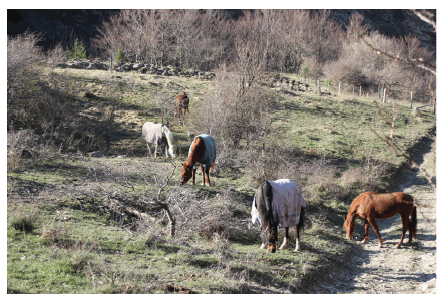Ricci-Bonot C* and Kiley-Worthington M
100 h (500 horse h) of critically assessed observations where analysed from two pastural situations on decision making and social networking in a herd of 5 arab and arab x horses of the Druimghigha Stud, behaviourally studied since 1978. Roles such as decision maker (the oldest mare) or follower (the youngest filly) and the popularity of each individual from whom they chose to be near were analysed. Social netwok analysis indicated the centrality of an individual, cohesive bonds among 3 mares and a sub group of the filly and the gelding. A network closure towards the gelding was also illustrated, while he attempted to build bridges to integrate into the group. Affiliative interactions and responses significantly out number aggressive ones (p<0.01) and confirm the importance of social cooperation, rather than a dominance hierarchy which is based on an assumption of competition.
These results are discussed and it is suggested that the most important reason to be social in large herbivores may be to pass on ecological knowledge to increase survival and reproductive success. To do this, individuals must learn to recognize the decision maker with the most knowledge and appropriate personality in order to remain/ become part of the group.
Graphical Abstract

Photo: Eco-Etho Research Centre, La Combe, in the mountains of La Drôme, France.
PDFShare this article
Journal of Animal Health and Behavioural Science received 38 citations as per Google Scholar report